Authentic and Classic Ukrainian Borscht Soup

Classic Borscht, or borsch, is a traditional Ukrainian dish, popular in many Eastern European countries, recently included in the list of Intangible Cultural Heritage of UNESCO. It is a soup made from meat and red beets, enriched in various ways, depending on the area of origin and the ingredients available at home, with potatoes, legumes and vegetables of all kinds. Hearty and fortifying, it is perfect for warming up cold winter days and to be served, together with toasted bread croutons, as a main course. In the recipe we propose, we start with the meat broth, prepared with 1 beef steak browned in a saucepan with a base of oil, carrots, celery and onion.
Then we proceed with cooking the beets, diced and boiled in boiling water. And, finally, we move on to the actual soup, cooked by flavoring the diced pork loin in a saucepan with a drizzle of oil, adding the beets with their cooking water, the boiling broth, the shredded beef and the cabbage cut into strips, and cooking everything over a low flame.
The result will be a hot and steaming dish, to be brought to the table combined with a spoonful of sour cream, ideal for any family lunch or dinner. You can serve the borscht with the beets and the rest of the ingredients chopped, following our suggestions, or blend everything with an immersion blender for a smooth and velvety consistency.
What is Borscht? How Do You Pronounce It?
Borscht is a traditional Eastern European soup with deep historical roots, particularly in Ukraine, where it is considered a national dish. Its origins trace back to ancient Slavic cuisine, with early versions believed to have been made from hogweed, a wild plant that was fermented to create a sour broth. Over time, the recipe evolved, incorporating beets, which gave borscht its signature deep red color. By the 16th century, with the spread of beet cultivation across Eastern Europe, borscht became a staple in Ukrainian, Russian, Polish, and other Slavic cuisines. Each region developed its own variations, sometimes including meat, cabbage, potatoes, or sour cream. More than just a dish, borscht holds cultural significance, symbolizing warmth, hospitality, and tradition, often enjoyed during family gatherings and festive occasions.
Pro Tips for The Best Traditional Borscht
- Opt for fresh, firm beets to achieve the most vibrant color and rich, earthy sweetness in your soup.
- Cook the soup over low heat to allow the flavors to meld together without overcooking the vegetables, preserving their texture and nutrients.
- Borscht tastes even better the next day! Allowing it to sit overnight enhances the flavors as they blend together.
- Traditional accompaniments like dark rye bread or pampushky (garlic rolls) elevate the experience and complete the meal.
Is Borscht Russian or Ukrainian?
Borscht is primarily Ukrainian in origin, though it is widely consumed across Eastern Europe, including Russia. Historical records and culinary experts recognize Ukraine as the birthplace of borscht, with early versions dating back centuries in Ukrainian cuisine. Over time, the dish spread to neighboring countries, including Russia, Poland, and Belarus, where it developed regional variations. While Russia has its own versions of borscht, the soup remains a key part of Ukrainian culinary and cultural identity. In 2022, UNESCO officially recognized Ukrainian borscht as part of Ukraine’s intangible cultural heritage, further affirming its Ukrainian roots.
What Does Borscht Taste Like?
Borscht has a unique balance of sweet, sour, and savory flavors. The beets give it a natural sweetness and earthy depth, while ingredients like vinegar, lemon juice, or tomatoes add a pleasant tangy contrast. If made with meat, it has a rich, hearty umami taste, while vegetarian versions are lighter and more refreshing. Garlic, onions, and herbs like dill enhance its aromatic complexity. A dollop of sour cream adds creaminess and rounds out the flavors, making borscht a deeply comforting and well-balanced dish.
Is Traditional Borscht Vegetarian?
Traditional borscht can be both vegetarian and non-vegetarian, depending on the region and recipe. In Ukraine, classic borscht is often made with meat-based broth (like beef or pork), giving it a rich, hearty flavor. However, there are also traditional vegetarian versions, especially during religious fasting periods, where the soup is made with vegetable broth and still maintains its signature sweet and tangy taste. Both versions are considered authentic, with ingredients like beets, cabbage, potatoes, and carrots forming the base of the dish.
How to Peel and Cut Beets For Borscht
To peel and cut beets for borscht, follow these simple steps:
- Wear gloves (optional) – Beets can stain your hands, so wearing gloves can help prevent this.
- Rinse and scrub – Wash the beets under running water and scrub off any dirt.
- Peel the skin – Use a vegetable peeler or a knife to remove the thin outer skin. If the beets are cooked first, the skin will easily slide off when rubbed with a paper towel.
- Cut to desired shape – Depending on your recipe, you can: grate for a smoother texture and even cooking; julienne (thin matchsticks) for a more traditional look; dice for chunkier bites.
- Use immediately – Beets oxidize quickly, so add them to your soup right after cutting to preserve their color and nutrients.
What Can I Serve With Borscht?
The most common pairing is a dollop of sour cream, which adds creaminess and balances the soup's acidity. Fresh herbs like dill or parsley provide an aromatic touch. For a heartier meal, borscht is often enjoyed with rye bread or garlic pampushky (Ukrainian soft garlic rolls). In some regions, it’s served with salo (cured pork fat) or boiled potatoes on the side. For a modern twist, you can pair it with crackers or toasted bread.
Can Traditional Borscht Be Made Ahead of Time?
Yes! In fact, it often tastes even better the next day. Letting it sit allows the flavors to deepen and blend, creating a richer, more balanced taste.
Does Borscht Freeze Well?
Yes! Borscht can be frozen for up to 3 months without losing its flavor. To freeze, let it cool completely, then transfer it to an airtight container or freezer bag. Leave some space for expansion. When ready to eat, thaw it overnight in the fridge and reheat gently on the stove. If your borscht contains potatoes, they may become slightly grainy after freezing, so you can add fresh ones when reheating for the best texture.
How to Store Borscht
To store borscht leftovers, let the soup cool completely, then transfer it to an airtight container. Keep it in the refrigerator for up to 4-5 days.
When reheating, warm it slowly over low heat to preserve the flavors and texture. If using sour cream, add it fresh after reheating for the best taste.
Ingredients
How to Make Ukrainian Borscht
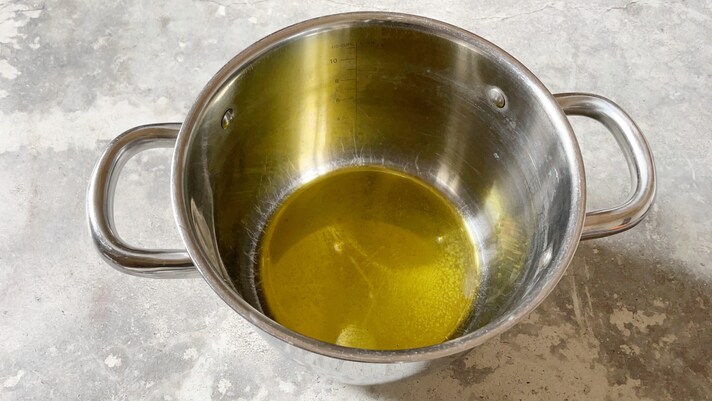
For the meat broth: pour a drizzle of oil into a saucepan.
For the meat broth: pour a drizzle of oil into a saucepan.
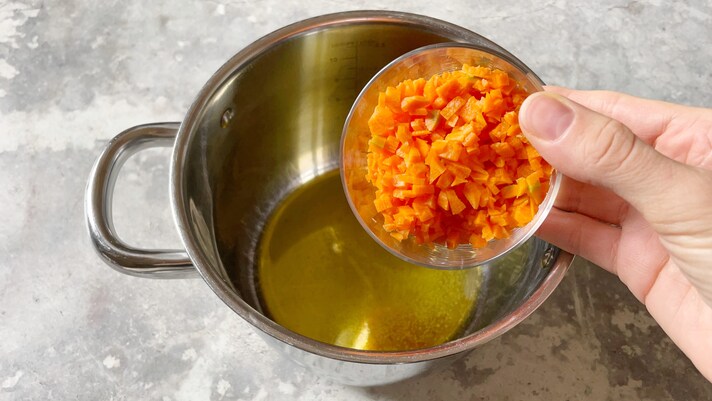
Add the carrots, peeled and diced.
Add the carrots, peeled and diced.
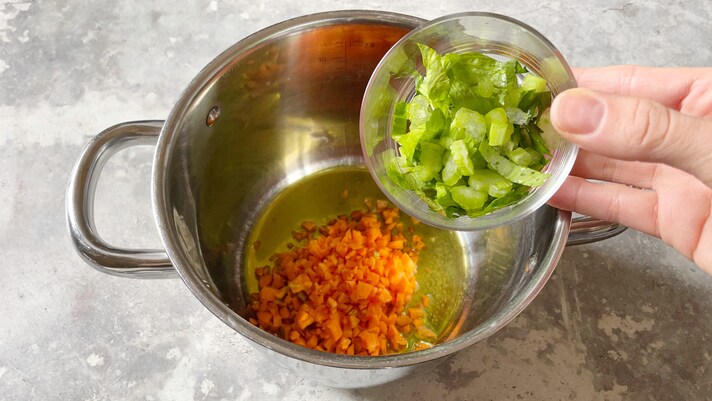
Pour the sliced celery coast.
Pour the sliced celery coast.
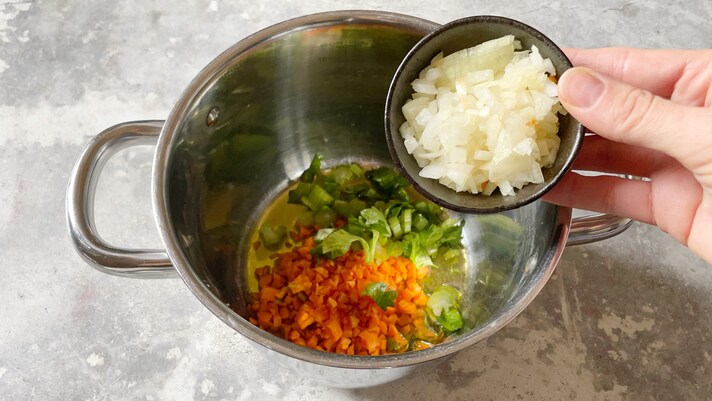
Add the chopped onion.
Add the chopped onion.
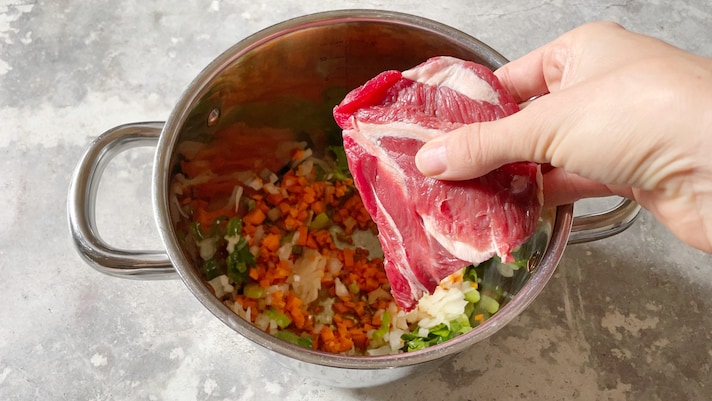
Place the beef in the saucepan.
Place the beef in the saucepan.
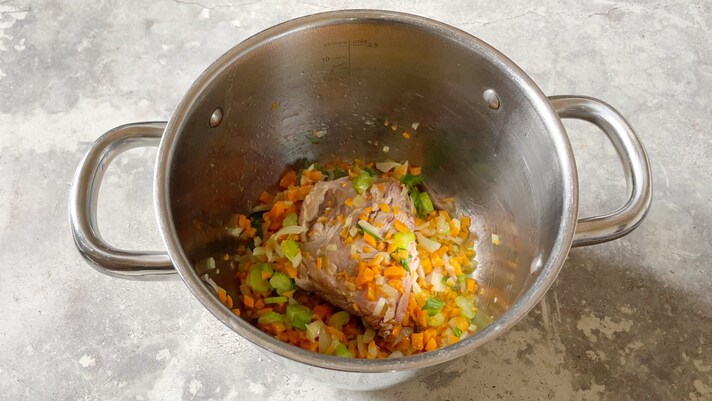
Let it brown on a low flame on both sides.
Let it brown on a low flame on both sides.
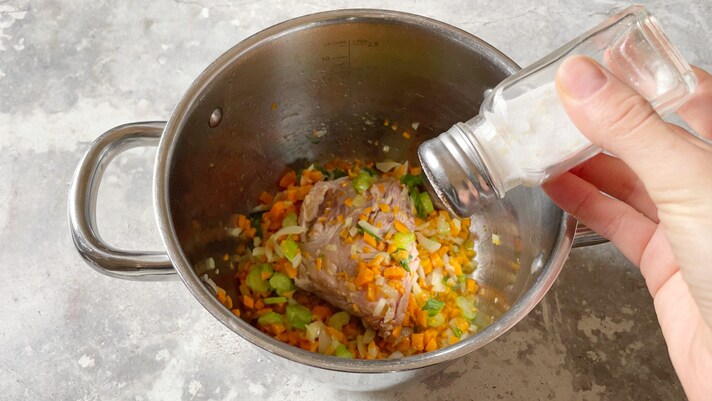
Add salt to taste.
Add salt to taste.
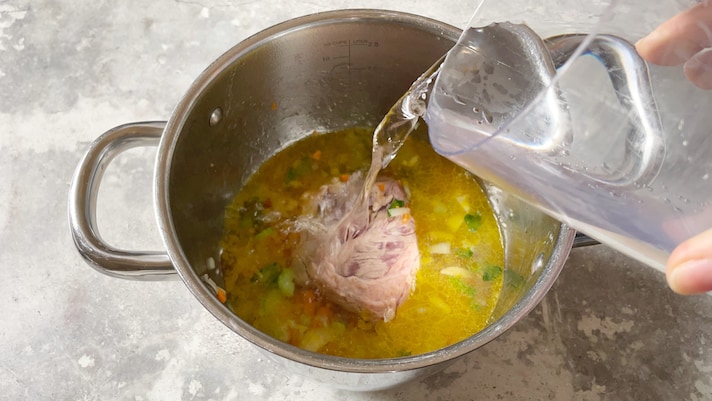
Cover with water.
Cover with water.
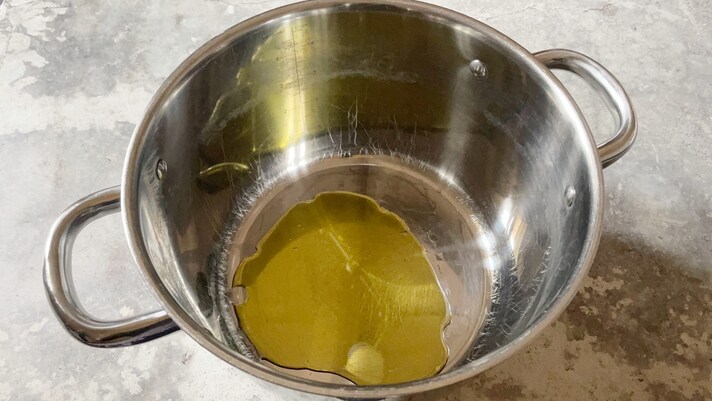
Prepare the beets: peel them, cut them into cubes and boil them in a pot with cold water for about forty minutes from when it starts to boil. In the meantime, pour a drizzle of oil into another saucepan.
Prepare the beets: peel them, cut them into cubes and boil them in a pot with cold water for about forty minutes from when it starts to boil. In the meantime, pour a drizzle of oil into another saucepan.
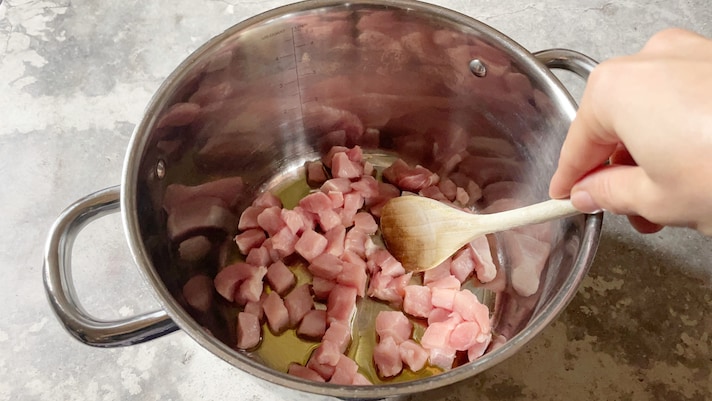
Add the pork loin cut into cubes.
Add the pork loin cut into cubes.
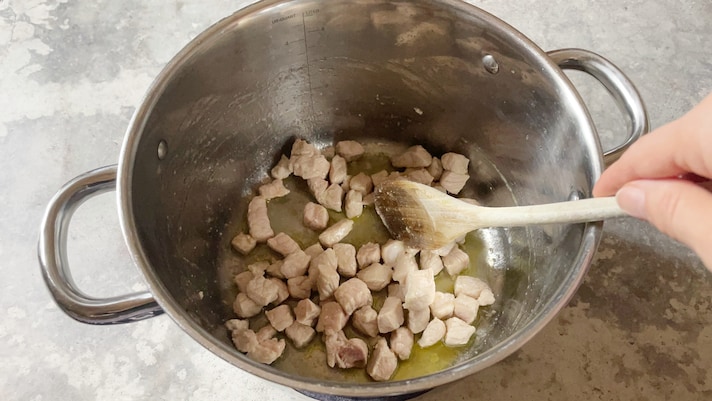
Brown for 3-4 minutes.
Brown for 3-4 minutes.
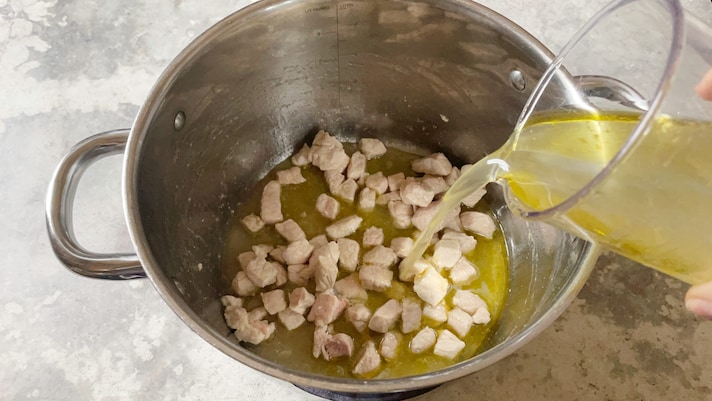
Once ready, filter the meat broth and pour it into the saucepan with the park.
Once ready, filter the meat broth and pour it into the saucepan with the park.
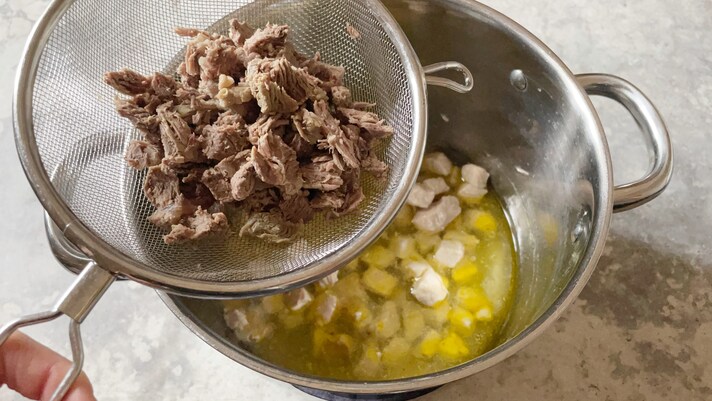
Add the shredded beef.
Add the shredded beef.
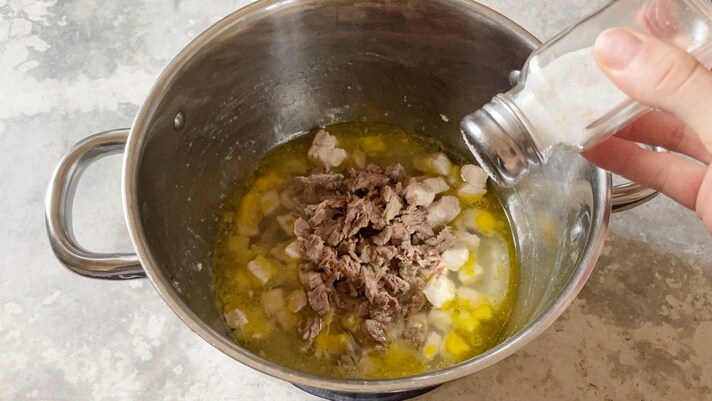
Add salt to taste.
Add salt to taste.
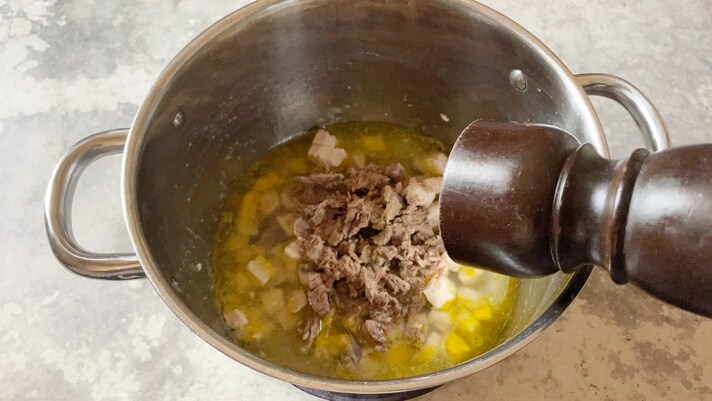
Season with a pinch of pepper.
Season with a pinch of pepper.
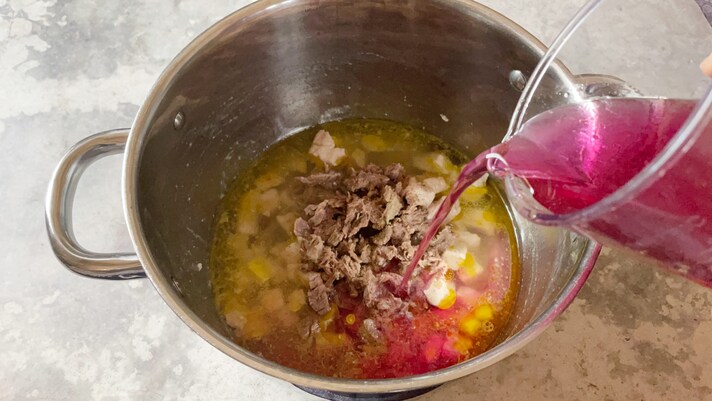
When the beets are ready, drain them and pour their cooking water into the saucepan with the meat.
When the beets are ready, drain them and pour their cooking water into the saucepan with the meat.
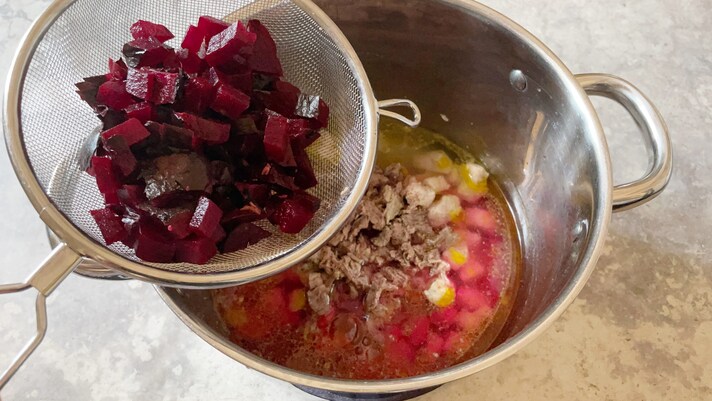
Add the beetroots.
Add the beetroots.
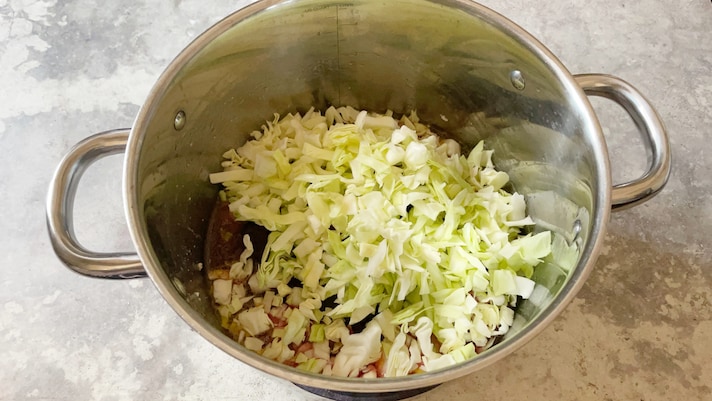
Add the cabbage cut into strips.
Add the cabbage cut into strips.
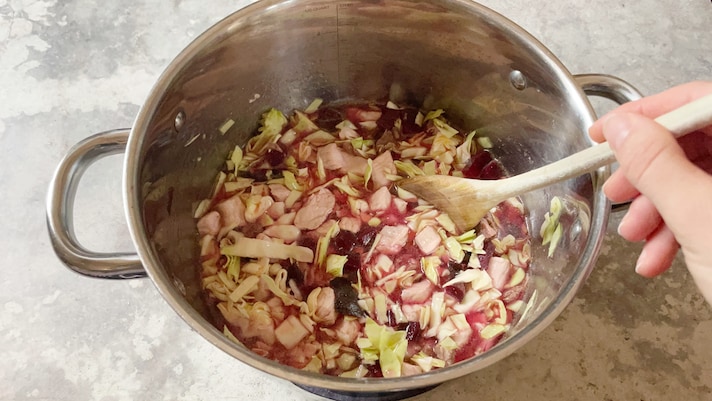
Mix with a wooden spoon and let it cook gently for about 45 minutes.
Mix with a wooden spoon and let it cook gently for about 45 minutes.
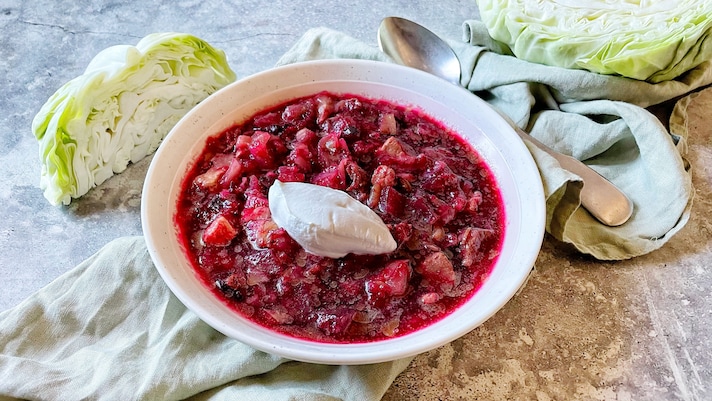
Once ready, divide the soup into individual plates, and garnish with 1 tablespoon of sour cream. Enjoy!
Once ready, divide the soup into individual plates, and garnish with 1 tablespoon of sour cream. Enjoy!
;Resize,width=767;)
;Resize,width=712;)
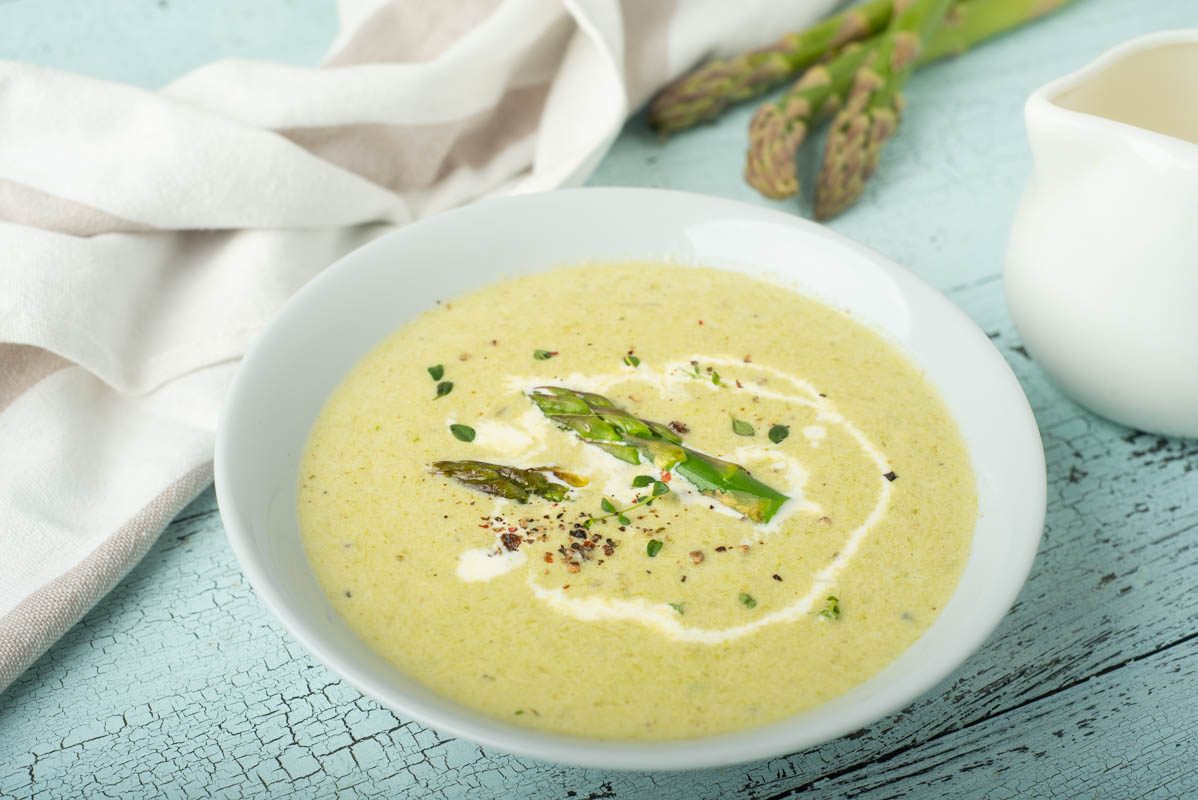;Resize,width=712;)
;Resize,width=712;)
